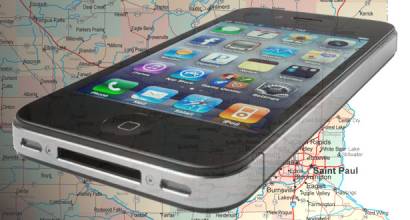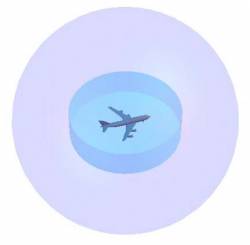How do you win when you are really losing?
Play a different game, move the goalposts, change the rules.
For several years now, a series of would-be wireless broadband service providers have been attempting to convince the Federal Communications Commission (FCC) to repurpose radio frequency spectrum near the GPS L1 band.
Past efforts have failed because of the transmissions’ demonstrated harmful effects on GPS and other GNSS signals. Now a new contender is trying to gain FCC’s approval by changing the way that those effects are measured.
How do you win when you are really losing?
Play a different game, move the goalposts, change the rules.
For several years now, a series of would-be wireless broadband service providers have been attempting to convince the Federal Communications Commission (FCC) to repurpose radio frequency spectrum near the GPS L1 band.
Past efforts have failed because of the transmissions’ demonstrated harmful effects on GPS and other GNSS signals. Now a new contender is trying to gain FCC’s approval by changing the way that those effects are measured.
Ligado Networks, which arose from the ashes of LightSquared, is proposing a new round of tests to demonstrate that a revised spectrum plan will allow its terrestrial transmissions to coexist with GNSS. Several years ago LightSquared failed to gain FCC approval after extensive tests of its original proposal, overseen by the broadband company and the GPS industry, revealed serious and widespread interference to GNSS receivers.
Ligado has altered its request to the FCC, offering to abandon the 1545–1555 MHz downlink band closest to GPS and other GNSS services at L1. That would leave it with the more distant 1526–1536 MHz band. The company says it would also reduce the effective isotropically radiated power (EIRP) limit for this band from 42 dBW to 32 dBW.
This proposal won the support of some key GNSS equipment manufacturers, as long as Ligado can demonstrate that its transmissions in the lower 10-megahertz band will not harm GNSS signals.
That’s where Ligado has begun trying to change the rules of how harmful effects are measured and to find a more sympathetic venue for their tests.
The traditional metric for measuring an unacceptable change in GNSS signal quality — and other communications, navigation, timing and radar systems — is a decibel or less reduction in the carrier-to-noise power density ratio (C/N0). That, indeed, is the path that the Department of Transportation (DoT) is following with its GPS Adjacent Band Compatibility (ABC) Assessment. Ligado, however, is proposing instead that its signals must show a measurable negative effect on positioning accuracy.
Taken out of context — historical, physical, operational — Ligado’s proposal might seem logical, even practical. GNSS is a positioning technology. If the positioning quality is unaffected, there shouldn’t be a problem. No harm, no foul, right?
Besides, carrier-to-noise power density ratio sounds abstract, theoretical, nerdy. Not the sort of measure that appeals to Americans’ pragmatic minds. Anyway, what’s a measly decibel among friends and neighbors?
Meanwhile, much as lawyers sometimes “shop around” for sympathetic judges to hear their cases, Ligado has been seeking a forum that will produce the results it wants and needs to sell its proposal to FCC commissioners — and perhaps to Congress to which the FCC reports.
That’s when Ligado discovered the National Advanced Spectrum and Communications Test Network (NASCTN), a national network of federal, academic, and commercial test facilities formed in 2015. Despite characterizing itself as a “neutral forum,” NASCTN’s acknowledges that part of its mission is to “accelerate the deployment of wireless technologies among commercial and federal users.”
In any case, it is the Ligado/NASCTN “measurand” of position accuracy that is impractical. The reality of the GNSS equipment marketplace is that there are hundreds, even thousands, of different types of receivers, each with its own hardware and software design, distinct algorithms for processing signals, and various intended applications. And neither Ligado nor NACTN propose to track them all down and measure their susceptibility to transmissions based on Ligado’s new spectrum plan.
Rather than trying to evaluate the variable effects on different types of user equipment, the traditional metric of measuring the RF source’s effect on C/N0 provides a consistent, quantifiable, and practical method for evaluating the technologies.





